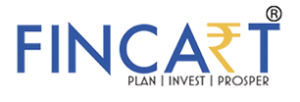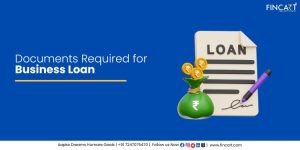When faced with financial needs, individuals often consider borrowing options like personal loan and overdraft facilities. Understanding the distinctions between these two can help you make an informed decision tailored to your financial situation.
What is a Personal Loan?
A personal loan is an unsecured loan provided by banks or financial institutions, offering a fixed sum of money that you repay over a predetermined period through equated monthly installments (EMIs). These loans are versatile, commonly used for purposes such as home renovations, weddings, education expenses, or medical emergencies.
Features of Personal Loans:
Lump-Sum Disbursement: Upon approval, you receive the entire loan amount at once.
Fixed Interest Rates: Many personal loans come with fixed interest rates, ensuring consistent monthly payments.
Structured Repayment: Repayment terms are set, typically ranging from 12 to 60 months, with fixed EMIs.
No Collateral Required: Being unsecured, these loans don’t necessitate collateral.
Advantages of Personal Loans:
- Predictable Repayments: Fixed EMIs facilitate easier budgeting.
- Lower Interest Rates: Generally, personal loans have lower interest rates compared to overdrafts.
- Higher Loan Amounts: Suitable for significant expenses due to higher borrowing limits.
Limitations of Personal Loans:
- Less Flexibility: Once the loan amount is disbursed, you cannot adjust the borrowed sum.
- Interest on Full Amount: Interest accrues on the entire loan amount, regardless of usage.
- Prepayment Penalties: Some lenders may charge fees for early repayment.
What is an Overdraft?
An overdraft is a credit facility linked to your bank account, allowing you to withdraw funds exceeding your account balance up to an approved limit. Interest is charged only on the amount utilized, not on the entire overdraft limit.
Features of Overdrafts:
Flexible Withdrawals: Access funds as needed, up to the set limit.
Interest on Utilized Amount: Interest is charged solely on the amount you overdraw.
No Fixed Repayment Schedule: Repayments are flexible, typically requiring only the payment of interest monthly; principal repayment terms vary by bank.
Revolving Credit: As you repay the borrowed amount, your available credit replenishes.
Advantages of Overdrafts:
- Immediate Access: Quick access to additional funds when needed.
- Pay Interest Only on What You Use: Cost-effective for short-term or variable borrowing needs.
- Flexible Repayments: No fixed EMIs, allowing repayment based on cash flow.
Limitations of Overdrafts:
- Higher Interest Rates: Generally, overdrafts carry higher interest rates compared to personal loans.
- Lower Credit Limits: The borrowing limit is often lower than that of personal loans.
- Potential Fees: Exceeding the overdraft limit or failing to meet repayment terms may incur additional fees.
Key Differences Between Personal Loans and Overdrafts
The fundamental difference between a personal loan and an overdraft lies in how and when the borrowed money is accessed and repaid. Given below are the main differences:
| Aspect | Personal Loan | Overdraft |
| Disbursement | Lump sum amount disbursed at once. | Withdraw funds as needed, up to the approved limit. |
| Interest Calculation | Charged on the entire loan amount from the disbursement date. | Charged only on the amount utilized, not the full limit. |
| Repayment Structure | Fixed EMIs over a predetermined tenure. | Flexible repayments; typically, interest is paid monthly, with principal repayment terms varying by bank. |
| Loan Tenure | Typically ranges from 12 to 60 months. | No fixed tenure; the facility is ongoing as long as terms are met. |
| Credit Limit | Determined based on income, credit score, and lender policies; generally higher. | Set by the bank based on account history and creditworthiness; generally lower. |
| Collateral Requirement | Generally unsecured; no collateral needed. | Often unsecured, but some banks may require collateral, especially for higher limits. |
| Processing Time | May take a few days for approval and disbursement. | Faster access once approved, especially if linked to an existing account. |
When to Choose a Personal Loan
If you are certain about the amount you need to borrow and prefer a clear repayment structure, a personal loan is likely the better choice. It’s particularly suitable for large, one-time expenses where you want predictability in repayment. On the other hand, if your borrowing needs are uncertain or variable—such as during a temporary cash crunch or for business working capital—an overdraft may be more appropriate due to its flexibility and on-demand access.
Consider a personal loan if:
You Require a Large Sum: Ideal for significant, planned expenses like home renovations or weddings.
Prefer Structured Repayments: Fixed EMIs help in budgeting and financial planning.
Seek Lower Interest Rates: Generally, more cost-effective for long-term borrowing.
When to Opt for an Overdraft
An overdraft may be suitable if:
Need for Short-Term Funds: Useful for covering temporary cash flow shortages or unexpected expenses.
Desire Flexible Borrowing: Withdraw and repay funds based on your immediate needs and cash flow.
Uncertain About Exact Amount Needed: Provides the flexibility to borrow varying amounts up to the limit.
Final Thoughts
Both personal loans and overdraft facilities offer valuable financial solutions tailored to different needs. Your choice should align with your financial requirements, repayment capacity, and the nature of the expense. Carefully assess the terms, interest rates, and associated fees of each option before making a decision. Consulting with a financial advisor can also provide personalized guidance based on your financial situation.




